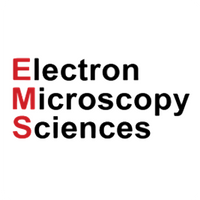Reactive ion etchers, Model RIE 2000
The Reactive Ion Etcher (RIE) is a table-top plasma chemistry reactor designed to provide anisotropic etch plasma technology at a moderate cost. This simple-to-operate instrument can perform repeatable plasma chemical reactions with a minimum of automation. All controls are manually entered into and monitored by a touch-screen interfaced control system which is equipped with automatic monitors and interlock controls to protect the equipment and the samples in the reactor. The RIE requires cooling of the stage. A simple water recirculator is typically sufficient for this task. A small water chiller option is also available for this system. Vacuum is supplied by an integrated turbo pump.
Wet etching of samples is not only dangerous, in many cases it causes undercutting due to the isotropy of the etch. The Reactive Ion Etcher (RIE) uses dry etching to create an anisotropic etch - meaning that the etch is uni-directional. For laboratory applications, the typical plasma etcher has a "barrel" design, or in other words, a cylindrical or barrel geometry to the reaction chamber. One feature of this design is that any point on the surface to be etched can be approached with equal probability from all directions, leading to an etch that is described as being "isotropic". For most if not many applications generally, an isotropic design is probably the design of choice. But in some instances, such as the removal of a passivization layer from an electronic device, isotropic etching always results in undercutting, and when the lines are below a certain point in width, such processing completely undercuts the lines leading to the layers literally falling off. But because for a "barrel" design, one can achieve respectable etch rates at relatively low power, the systems can be built and sold at lower prices.
Applications:
- Final package removal
- Glass passivation layer removal
- Deep etching
- Removal of contaminants
System Includes:
- Reactive Ion Etcher
- Quartz Chamber
- Vacuum hose
Specifications:
| Design | Table top size, LED touch screen for ease of use, |
| Dimensions (L x W x H) | 381 x 533 x 356mm |
| Chamber Size | 8" outside diameter x 4in high, 6" sample stage Shielded Quartz chamber |
| Pump | 70 1/sec Turbomolecular Pump |
| System Vent | Independent interlocked solenoid with connection for dry nitrogen |
| Gas Delivery | Dual gas input, manual gas and pressure control. Works with O2, CF4, Ar and other gasses Complete with Turbo System and controller |
| Gas Control | Dual independent needle valves with safety interlocked solenoid |
| Timer | Auto-termination of etch up to 99:99:59 Process timer for reproducible runs |
| Power | User variable 0-200W; 13.56 MHz frequency, manual tune; air cooled; solid state design. |
| Electrical | 110/240VAC, 50/60Hz |
| 75lb |
The system does include a simple water circulator. We would recommend that a small water chiller be used which will provide a reliable flow of cool water.
Also available:
EMS55321-2D - Replacement standard die, 3mm
EMS55320-05 - UC170 Chiller by Solid State Cooling Systems will give precise temperature control and respond instantly to any load changes holding to ± 0.1°C, even near ambient temperature. It is highly energy efficient, only using power as needed. This unit will fit with ease on your tabletop or inside your equipment, as it is the world's smallest air-cooled recirculating chiller.
UC170 Chiller:
| Operating Range | 2°C to 45°C (160W / 180W models) 10°C to 45°C (170W / 190W models) |
| Ambient Temperature | 10°C to 40°C non-condensing |
| Repeatability | ± 0.1°C (even near ambient) |
| Cooling Capacity | 160W to 190W @ 20°C (20°C ambient) |
| Noise (at 1 meter) | <63dBA |
| Coolant/Process Fluid | Koolance (27% propylene glycol/water mix) or 27-50% ethylene glycol/water mix |
| Process Fluid Fittings | ⅛" female CPC with shut-off valve |
| Pump | Magnetically-coupled gear pump with brushless DC motor |
| Tank Volume | 75ml with level sensor (optional sealable cap) |
| Wetted Materials | Al and polymers, or Cu and polymers |
| Size (L x W x H) | 19 x 13 x 18cm |
| Weight | 3.5kg |
| Power Input | Universal: 100 - 240VAC, 50/60Hz, 2.8A max |
| Power Consumption | Less than 200 Watts |
| Operating Voltage | 13.5VDC, 15A max (universal input, laptop style power supply included) |
| Communications | Keypad or RS232 interface |
| Alarms | Temperature, fluid level, component or system failure (display, RS232 and dry contact) |
| Code | Type | Pack Size | Availability | Price | Updated: 28-11-2025 |
|---|---|---|---|---|---|
| EMS55320-02 | RIE 2000 | Each | 0 in stock (?) | P.O.R. | Quote |
| EMS55320-04 | RIE 2000 with turbo pump | Each | 0 in stock (?) | P.O.R. | Quote |
| EMS55320-05 | UC170 chiller | Each | 0 in stock (?) | P.O.R. | Quote |
| EMS55321-2D | Standard die, 3mm | Each | 0 in stock (?) | P.O.R. | Quote |
* Ordering Schedule
This item is available for back-order where 0 stock is listed.
We order from this manufacturer weekly, with an estimated lead time of 4 weeks.
This is the estimated lead time, based on the average time taken previously to fill orders from this particular supplier.
Lead times are from when we receive your order until when we fill your order. For delivery times, please see shipping information below.



